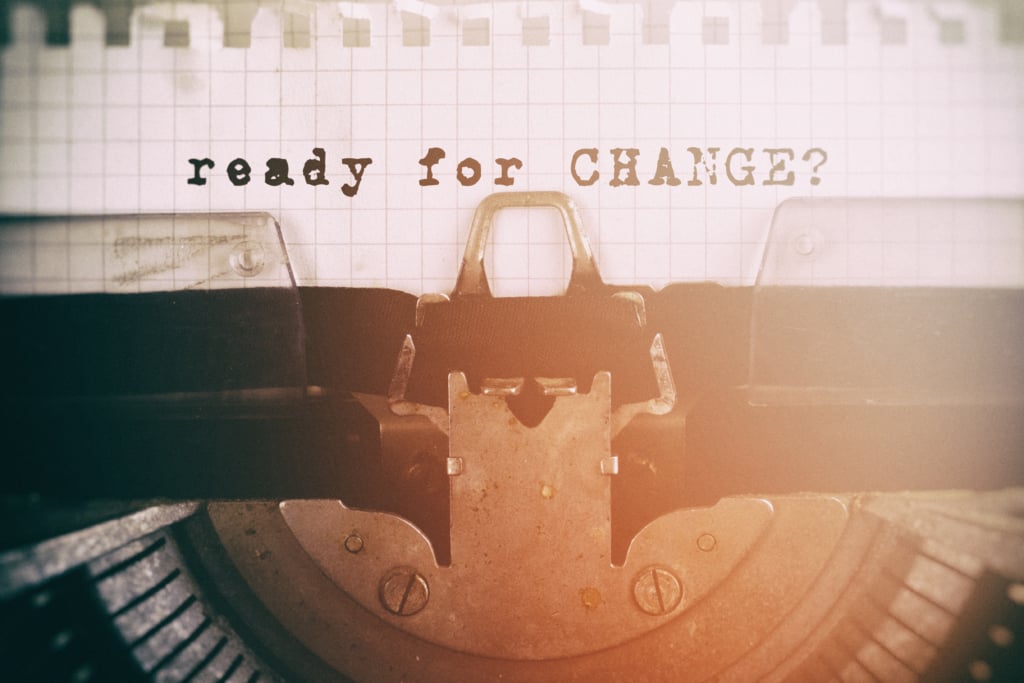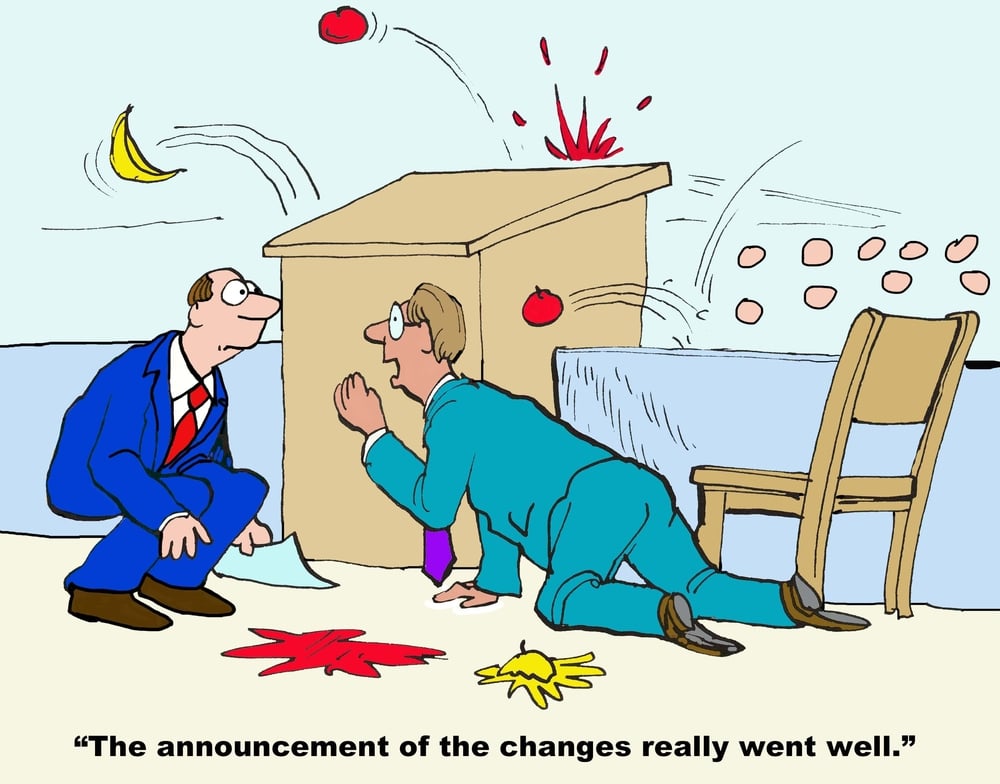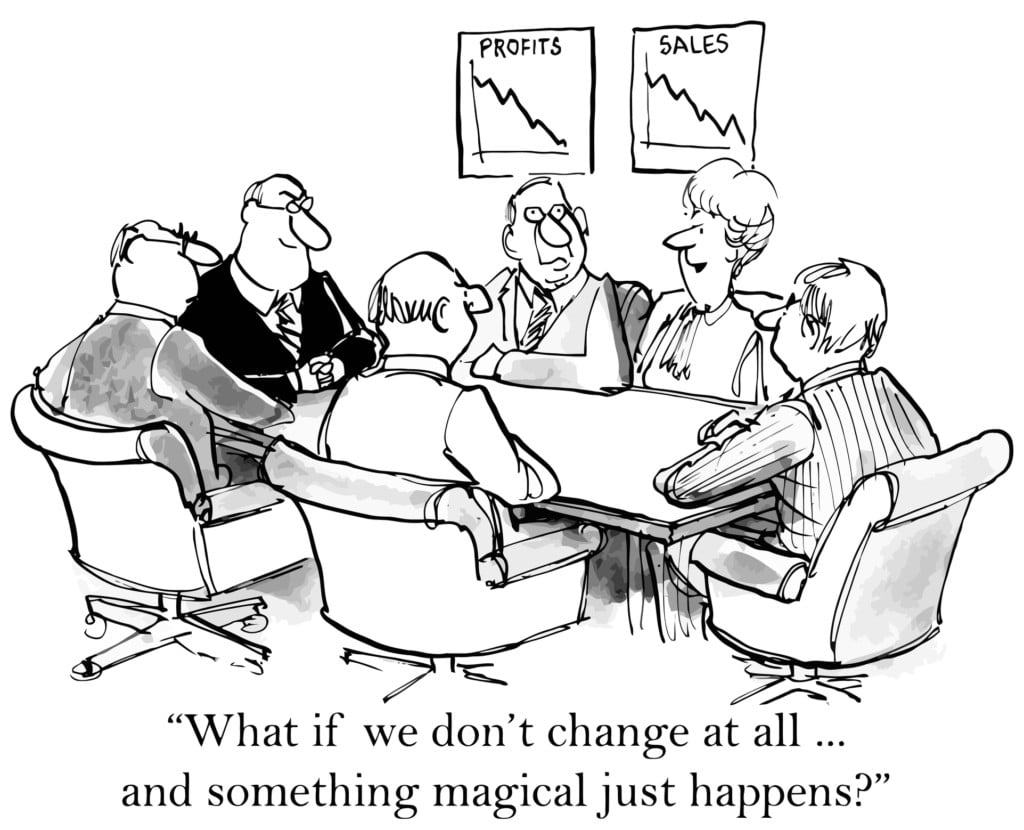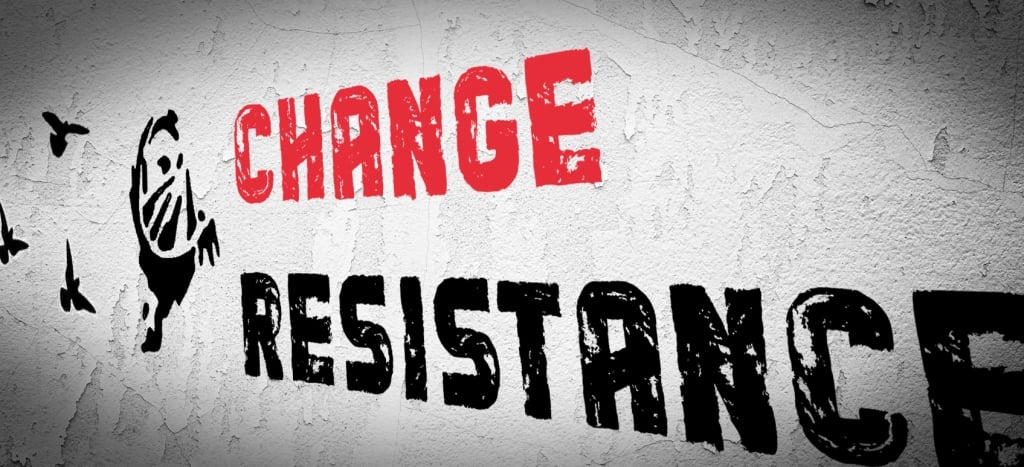The ability to change rapidly at an organisational level is an increasingly critical capability, regardless of sector or organisation type.
For organisations, change needs to happen in order to stay relevant and to continue delivering a compelling value proposition. For the people within, the way change is handled can have a dramatic effect on their health and mental wellbeing. The good news is that when done right, change can deliver rapid value for the organisation whilst ALSO contributing positively to the wellbeing of the people involved.
So how do you hit that sweet-spot? That’s where organisational change readiness assessment can be your guide.
An organisational change readiness assessment examines how prepared stakeholders are to accept and adopt change, taking into consideration data at the individual, team and organisation level.
Weiner’s “A Theory of Organizational Readiness for Change (2009)” argues that organisational readiness is a shared psychological state in which organisational members feel committed to implementing an organisational change and confident in their collective abilities to do so.
A change readiness assessment seeks feedback on a range of dimensions, mainly internal to the organisation, but external dynamics may also be relevant. Combe (2014) notes that the readiness of an organisation has three key drivers: culture, commitment and capacity. An assessment can examine the status of these and how favourable they are to change in an organisation.
Ideally, all key stakeholders within the organisation are assessed on a change readiness scale. This may be done via an interview on a small scale, or via questionnaires when the change affects too many people for individual interviews to be conducted with everyone. When individual assessments are collated, you get a picture of readiness at a team level and again at a division or organisation level. This can help you to identify hotspots where gaps are not isolated but exist across much of a team. Equally, you have visibility of strengths, for example, teams or departments which are highly receptive to change.
Why is an organisational change readiness assessment important and when should I use it?
Having a good understanding of an organisation’s readiness for change puts you in a position of strength. It means you can tackle issues before starting any change rollout. If you get this stage right, it will significantly increase the likelihood of successful change
There is truth in the saying “Forewarned is forearmed.” Using the information you discover from your assessment gives you the tools to proactively manage any potential issues BEFORE they become a problem. If readiness is good, then you can move into implementation with confidence that it will deliver the outcomes.
However, where readiness is found to be low, you’ll be able to address the gap and give yourself a far better chance of a good outcome.
If you don’t take the time to assess readiness beforehand and address any readiness gap identified, you are far more likely to experience difficulties at the implementation stage. Studies show that this is a major contributor to the failure of projects.
We would recommend that a change readiness assessment is carried out prior to any major change programme and it can also be incredibly valuable for smaller projects too.
The timing of the assessment is important. Assess readiness too early and the information is less reliable and too late means there’s insufficient time to address the findings effectively. This is particularly pertinent in sectors that have more transient staffing, or where external factors change rapidly.
How does change readiness relate to change management?
Change readiness is an integral part of change management. Without a change readiness assessment, we cannot know whether an organisation is prepared for change or not. When an organisation is not ready for change, it is inevitably going to be more difficult to introduce new ways of working. In some cases, this may result in failure to implement and embed changes. Studies tell us that the majority of change projects fail, with as many as 70% not delivering or sustaining the intended outcome.
Herscovitch and Meyer (Commitment to Organizational Change: Extension of a Three-Component Model, 2002) found that the three-component model previously developed by Meyer and Allen, could be applied to change management. The study identifies three levels of commitment to change:
- Affective commitment: the change is valued by the individual
- Continuance commitment: the individual feels no choice but to implement change
- Normative commitment: change is implemented out of a sense of duty
Ideally, we bring as many people as possible into affective commitment as part of our change readiness preparations.
In some situations, you may also be interested in the change readiness outside the organisation, such as the readiness of our organisation’s customers. This might be applicable where we are keen to push change outwards rather than responding to customer demand. For example, if we want to drive more customers to use a mobile app to engage with us, instead of more traditional methods of interaction. This may be organisation-driven because it is the organisation that will enjoy the primary benefits, such as cost reductions. Usually, the customer is likely to benefit too, and the change management work will need to include communicating to customers a compelling reason to make the changes we want to see. When it comes to gauging customer readiness, we may want to set up focus groups to assess their willingness and capacity to change.
What should a change readiness assessment focus on?
The major components of organisational readiness include:
Awareness
The first stage in preparing an organisation for change is communication. Even if there are restrictions for operational reasons on when particular people or departments can be informed, it is essential to have a plan which covers communications to all stakeholders.
We know from Kubler-Ross’s Change Curve that acceptance of change is not immediate. You need to allow time for people to pass through the phases of the Change Curve:
- Shock
- Denial
- Anger
- Depression
- Acceptance
Integration
Commitment
Even when we know that change is needed and we understand why some of us will still be reluctant to alter the way we do things. This may vary by personality type. There is comfort in the familiar, and for some of us moving out of that comfort zone can be challenging. Others may thrive on the excitement of change and may get restless when things remain the same for too long. These people are easy to win over, and they may be able to assist in convincing others to accept and adopt new practices.
Past experience of projects not being managed well, or of projects failing completely, can make people wary of change. There may be concerns that the effort spent on the new project will be wasted if it fails as previous ones have done. Similarly, if change has been implemented, but has not had a positive impact on some people, it will be harder to convince them to buy into more change programmes. These issues are not insurmountable, but they do need to be managed with care and sensitivity in order to deliver a new project successfully, as well as for longer-term enhancement of motivation in the team or organisation as a whole.
Capacity
No matter how receptive the stakeholders are to the idea of change, it cannot be successfully implemented without the required capacity to do so. Resources must be in place to support the project, including budget, skills, and time. Reviewing current capacity may highlight a training gap, or it may identify that a team critical to the implementation is already overwhelmed with work, and will need additional staffing in order to deliver change effectively. Assessing capacity for taking on change allows us to identify gaps and gives us the opportunity to take corrective action so that all stakeholders have the resources they need to deliver the change programme as planned.
At an organisational level, a readiness assessment should also consider any external constraints which may present barriers to change readiness. For example, legislative requirements could incur delays.
Questions in the assessment cover a wide range of topics such as:
- Support from key stakeholders
- Whether incentives are in place to encourage change
- Preference for the familiar versus the new
- Whether training and support is provided for change
- Readiness to adapt to market trends
When the assessment is completed, the results highlight key areas of strength/weakness with suggested development opportunities to improve change readiness.
Change readiness assessment is a key part of the High Impact Changemaker Framework our clients are using to guide them to better outcomes with lower resistance. The key areas of focus are:
Energise: creating a strong desire to change
Enable: removing the barriers to make change easier
Execute: ensuring belief in the ability to change
Embed: ensuring the change sticks beyond implementation
Evaluate: creating a culture of honest reflection and a growth mindset.
What are the tips for improving readiness for change within an organisation?
The best way to improve readiness for change is to foster a receptive culture in the organisation. Transforming the culture takes some time and effort, but it bears fruit. Creating a change-ready organisation means that we are in a strong position to adapt quickly to meet shifting market conditions and customer demands.
Engage with employees
Maintain two-way communication channels. Be as open as possible with all stakeholders about forthcoming changes, and actively seek feedback. Importantly, we need to demonstrate clearly that we are considering and acting on feedback. Once impacted parties recognise that they are being involved and listened to, we start to gain their trust. This will significantly increase the likelihood of cooperation with and support for the programme of change.
Transparency
The importance of communication cannot be overemphasised. This relates not just to sharing the details of what needs to change, but crucially, why. When we understand the reasons behind a course of action, we are much more likely to buy into it. This is partly because the benefits have been explained, but also for many of us, simply having someone take the time to explain the rationale to us, goes a long way towards gaining support. This type of engagement helps people to feel valued, trusted and involved.
Sell the benefits – or explain the non-negotiable.
Some changes may not have any obvious benefits to the organisation. For example, if legislation is introduced which necessitates changes to working practices. In this case, there is no scope for negotiation – the changes must be introduced or the organisation could be in breach of the law. The benefit is compliance with legislation, and therefore avoidance of fines or other consequences.
Embed experimentation in the everyday
When continuous improvement is embedded in everyday activities, change becomes second nature and is no longer something alien. Change is often perceived as something to avoid or to be feared because it is the unknown. When change becomes the norm in an organisation, people become more comfortable with it. However, frequent change should generally be incremental, so that it is manageable for everyone involved. If too many big-scale changes are introduced it can be stressful and unsettling, and this can lead to a yearning for the stability of lengthy periods without change.
Reward success and celebrate the learnings from failure
When change is successfully implemented and maintained, it’s important to recognise the achievements. Equally, when change is not successful, acknowledge the efforts made and appreciate the opportunity to learn from the experience. As Henry Ford wrote, “Failure is only the opportunity more intelligently to begin again.”
Relationship-building
Conducting a change readiness assessment is also an ideal opportunity for relationship-building. It is a convenient way to capture perspectives and engage in productive two-way conversation.
It also conveys a strong message that you are interested in them and their perspective. Asking people for their honest feedback and showing you are listening helps to create an environment of understanding and trust.
If the first contact is asking people to implement a change, without helping them to understand why is a little like a political candidate knocking at the door and asking for you to vote for them, when you have never heard from them before. Most of us would be far more likely to lend them our support if they had made previous contact with us and had demonstrated an interest in our views and feedback.
Listen with an open mind
Assuming you believe in the changes to be implemented, you can use that conviction to change behaviours and bring other parties from a state of resistance to being ready to accept, or better still, embrace the change. However, if you have any doubts about the validity of the proposed change, you’ll need to consider any feedback carefully and potentially revisit the plans with the project sponsors. There is no merit in persisting in implementing changes that are not the right course for the organisation.
Use the results of your assessment to inform your project plans. It is possible that the results of the assessment will mean that the plan for your change programme will need to be revised. Although it may go against the grain to delay a project rollout, it is better to do that and succeed than to plough ahead with implementation in an organisation that is not ready to adopt change.
Cultivate emotional intelligence
Research by Sharma and Singh (2018) found that emotional intelligence levels in an organisation influence change readiness. Emotional intelligence training for leaders can result in an improved ability to manage conflict and can help them to introduce change more effectively.
Organisational change readiness is by no means a guarantee of a successful project. Successful delivery of change also requires an effective implementation programme. However, the chances of delivering and embedding change as planned are enhanced when an organisation has a culture of embracing change and strives to maintain a state of change readiness.








